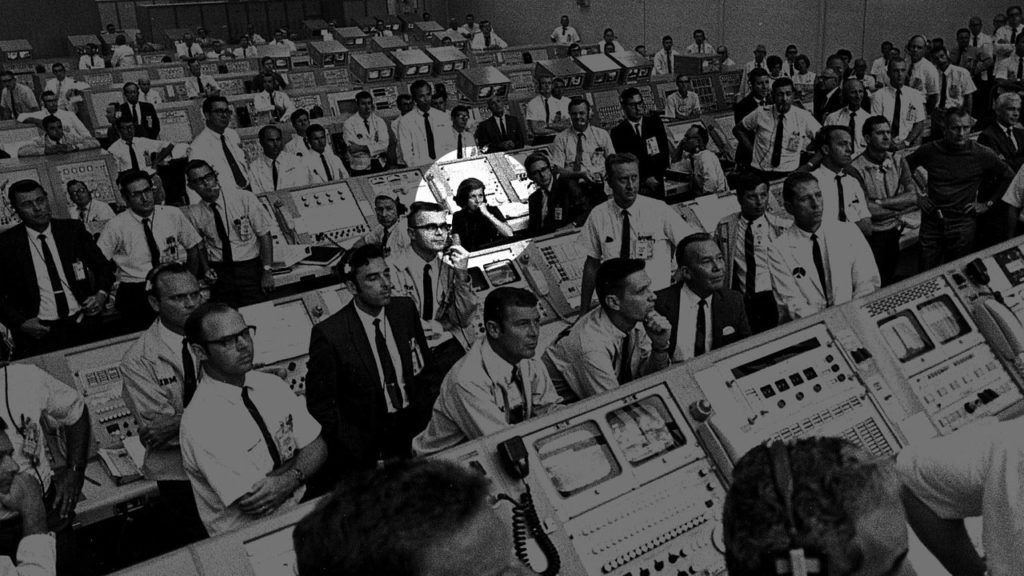
Fifty years ago, people gathered around their televisions and radios to witness an iconic moment in human history. That moment is as famous as the words spoken during it: “That’s one small step for man, one giant leap for mankind.”
Well, Neil Armstrong, not to be a buzzkill—but it was a giant leap you wouldn’t have made without womankind.
Specifically, an all-female team of coders whose work made Apollo 11 possible. Just like the women of Hidden Figures, this team of female coders were girl bosses before #girlboss was even conceived.
The Apollo 11 women were part of the larger team of female coders, headed by Macy Roberts at the Jet Propulsion Laboratory. The “computers,” as they were called, were in charge of plotting trajectories, checking the math, and generally making sure that the boys going up would also come back down.
For Apollo 11, a critical computer was Susan Finley, who worked on the Deep Space Network—the communication system that enabled people around the world to hear Neil’s transmission. When her “computer” skills were replaced by electronic computers, Susan became a computer programmer, then subsystems engineer. Her work on the Deep Space Network didn’t just allow communications—it helps interplanetary spacecraft missions of all kinds. Some of her early programs are still being used today! Now 82, Susan is among the longest-serving women at NASA, having participated in missions that explored the moon, sun, planets, and other objects in our solar system.
Another was Margaret Hamilton, who wrote the code that made landing on the moon possible! While computers today can handle those tasks, back in 1969, computers were barely able to handle the load of modern-day calculators. It was Margaret’s jobs to affirm that the calculations and programmed instructions were correct—as Director of the Software Engineering Division. When the 1201 error alarm went off during Neil’s landing, Margaret’s code assured them that they would land safely. She later went on to found and run her own company, Hamilton Technologies, and publish over 130 papers (that’s a lot!).
But there’s at least one other women we should praise today—JoAnn Morgan. On July 16, 1969, she stood where no other woman did: the NASA control room at Kennedy Space Center. An intelligent 28-year-old instrumentation controller, she was the first woman ever permitted inside the “firing room” as it was called—which was locked 30 minutes before blastoff. She spent her entire career at NASA, from its inception in 1958 until 2003, becoming an engineer and executive.
JoAnn watched the moon landing on a boat with her husband. In a recent Vanity Fair interview, when asked about facing sexism and discrimination, JoAnn said, “I had such a passion that overrode anything else, the lonely moments, the little bits of negative. They were like a mosquito bite. You just swat it and push on.”
So in the spirit of giant leaps, keep swatting those mosquito bites, girls. We’ve got worlds to conquer.
-Tiffany Rhoades
Program Developer
Girl Museum Inc.
